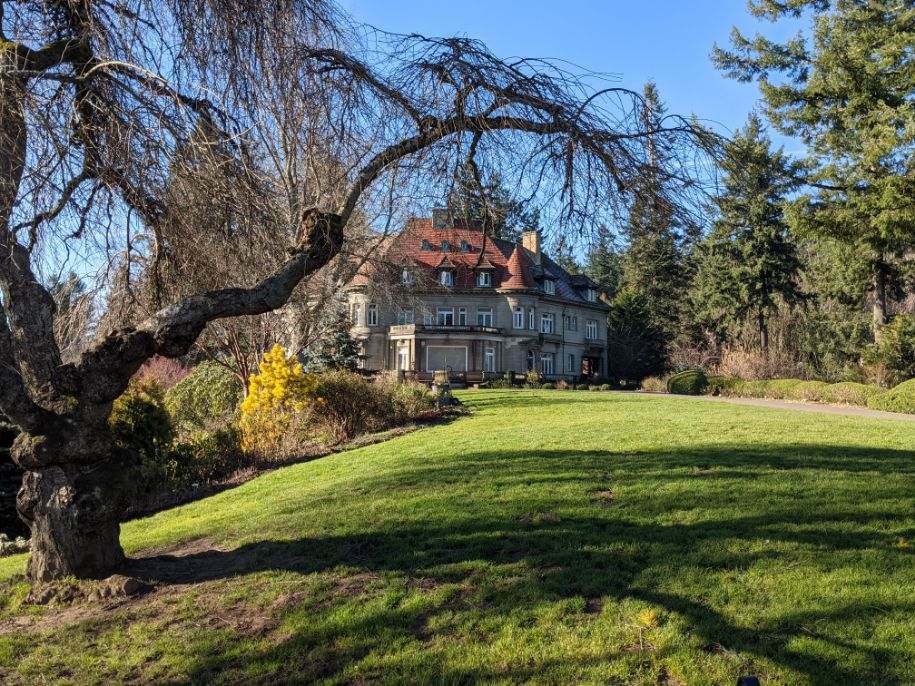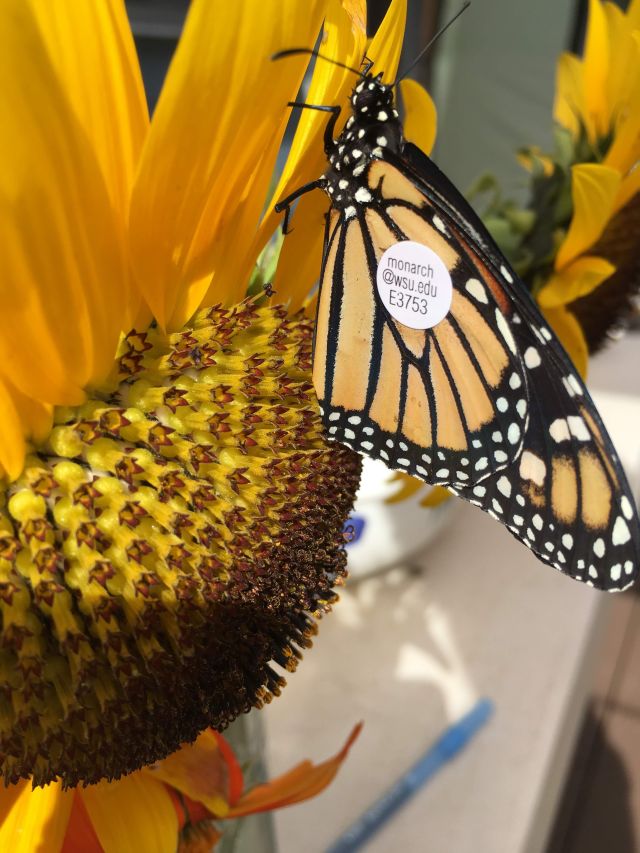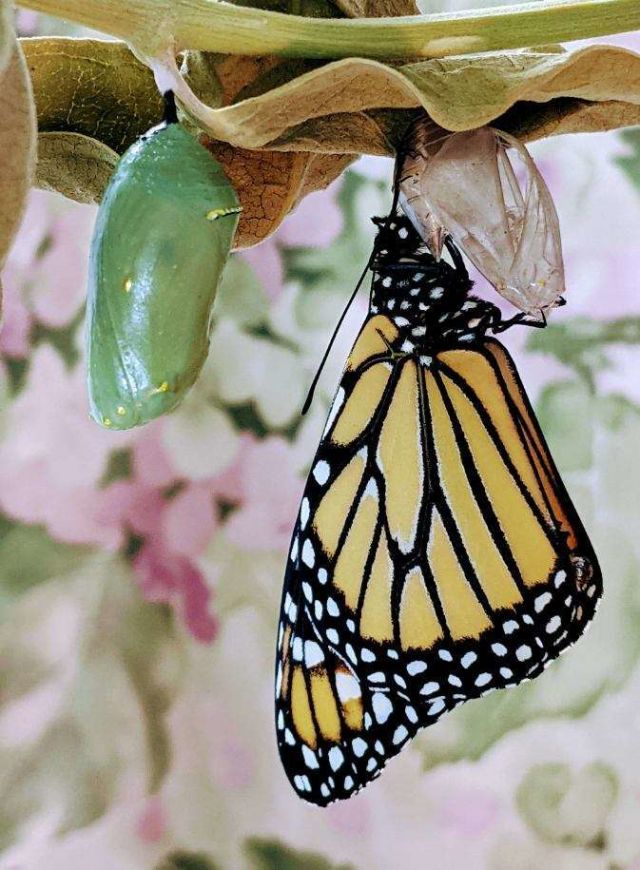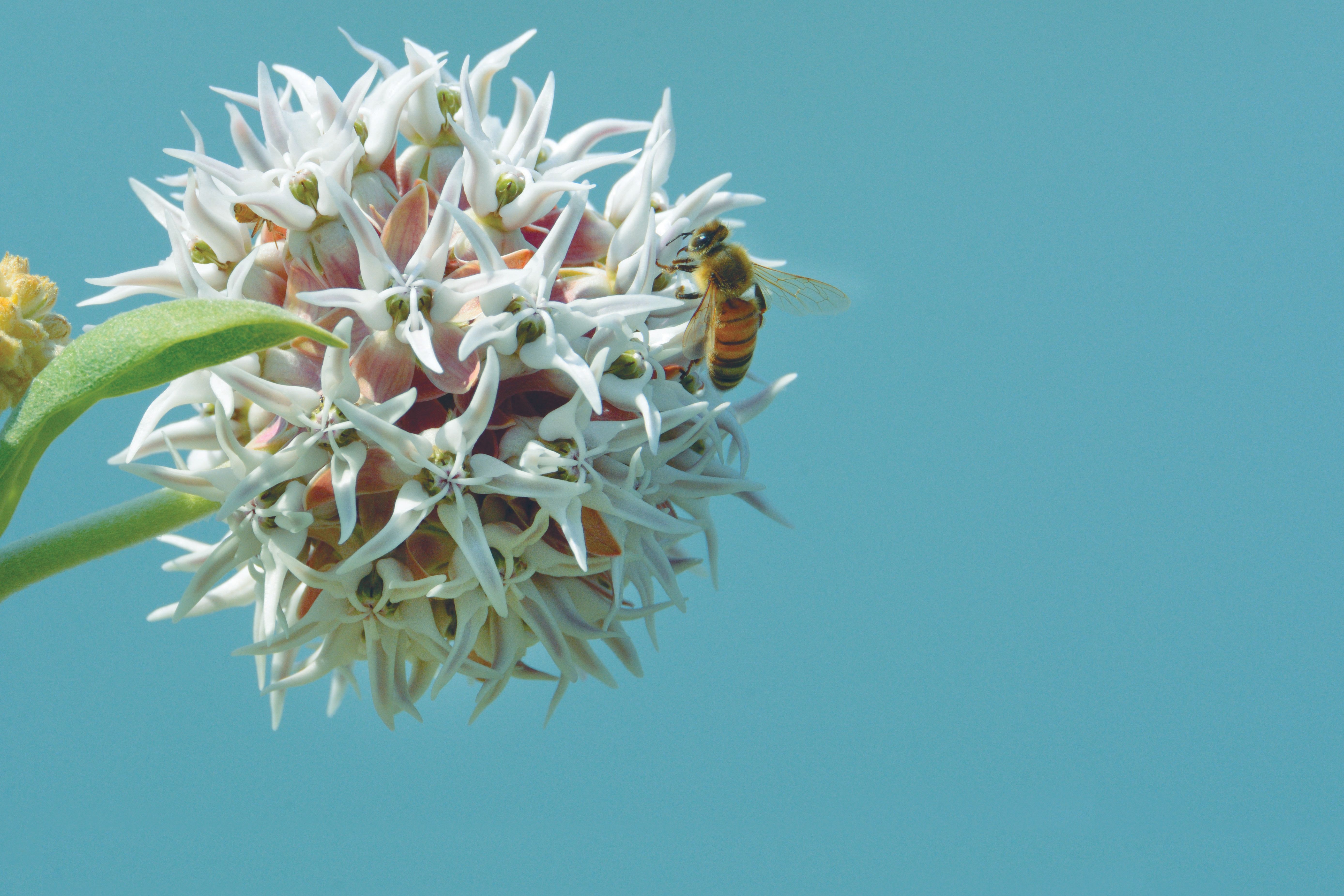Monarch Conservation Effort Reaches New Heights in Portland

Pittock Mansion will host a new monarch butterfly sanctuary. Volunteers, like Ida Galash of the Portland Monarchs Facebook group, broke ground on February 1, and are beginning to plant milkweed and other native plant species to help build a potential habitat.
Image: Courtesy Ida Galash
Ida Galash stood in front of her home in Northeast Portland last summer, enjoying the late-July sunshine, when she noticed a quick flash of orange above her head. This fleeting image turned out to be a monarch butterfly—the first known sighting in Oregon that summer, and one of the few documented western monarchs in Portland in the past two years. The migratory species, whose declining population has been a concern for conservationists, mostly winters in California but comes north in the warmer months.
“There are not a lot of eyeballs out there looking for monarchs in this area. People will often say, ‘Oh, we don’t really get [monarchs] here,’ and it’s like, well, we do. But who's out there watching for them?” Galash says. “If you see a monarch butterfly, that’s a really unusual, cool thing, and you should take a picture and report it.”
Galash runs the Portland Monarchs Facebook group, which has amassed a community of more than 700 monarch advocates from all over the world who use the page to share stories, educate themselves, and report monarch sightings. She hopes more Portlanders will also be able to experience the rather rare Portland monarch sighting (and report those sightings) at two new butterfly habitats at Pittock Mansion and Washington Park this summer. These new butterfly sanctuaries—and potentially more on the horizon—will soon be filled with milkweed and other native species planted in hopes of hosting a new generation of monarch butterflies, whose population has ebbed and flowed over the years.

Milkweed seeds and a commemorative rock at Pittock Mansion.
Image: Courtesy Ida Galash
The Pittock Mansion habitat, which broke ground February 1, is funded through a $2,000 grant issued by the US Forest Service. Pioneered by the Western Monarch Advocates and the Deschutes Land Trust, the project will exist on a “trial-run” basis, relying largely on Galash and her team of volunteers from Portland Monarchs (plus other interested locals) to keep the sanctuary maintained.
“We need community members to report sightings and get involved, and if they have [monarchs], to help with tagging and recording that information, so that the people who are studying them can use that info to determine how best we can help them as a species,” Galash says.
As it turns out, a majority of the people who study, track, and tag monarchs here in Oregon are simply people who love monarchs.
Stephanie Hazen, a retired veterinarian, estimates that she’s given more than 20 talks on monarchs and milkweed since 2015, when she joined the Western Monarch Advocates. Prior to that, it would have been a struggle for her to differentiate viceroys from monarchs (viceroys, with their orange and black wings, look almost identical to a small monarch). But since creating a successful monarch habitat on her back porch in Salem, she’s been hooked.

“The reason for the tagging is to monitor their progress as they make their way down to their overwintering grounds in coastal California,” Stephanie Hazen says. “One of our 50 tagged monarchs was found six times on the Southern Oregon coast. Success like that makes you just a zealot.”
Image: Courtesy Stephanie Hazen
When the monarch eggs hatched, Hazen and her husband contacted David James, a professor at Washington State University, who provided the couple with tiny stickers so they could tag their monarchs' wings before releasing them into the wild.
“The reason for the tagging is to monitor their progress as they make their way down to their overwintering grounds in coastal California,” Hazen says. “One of our 50 tagged monarchs was found six times on the Southern Oregon coast. Success like that makes you just a zealot.”
Hazen also estimates that she and her husband have distributed 3,000 to 4,000 milkweed plants across Oregon. She recommends using swamp milkweed (her favorite) and that people purchase only pesticide-free milkweed, as pesticides are a huge killer of monarchs, which are already almost endangered as it is.
The western monarch population is estimated to have declined 95 percent since the 1980s, according to Emma Pelton, a senior conservation biologist at the Xerces Society in Portland. In 2020, the population count was at a devastating low of only 2,000 western monarchs. Last year, however, that number skyrocketed to almost 250,000, and no one really knows why.
“The best way to think of it is the climate weather analogy,” Pelton says of the fluctuations. “We know that our climate is changing, but the weather from one year to the next may or may not be a direct indicator of climate change. But when we zoom out, we see this increasing trend.”
Insects, especially migratory ones like monarch butterflies, encounter several different environments over their lifetime. Because of this, Pelton says it’s difficult to pinpoint the exact cause of their population fluctuation. It could be global warming, harmful pesticides, land management issues—or some combination of all three. But because of community-science efforts, like the Western Monarch Thanksgiving Count in California, scientists can at least keep track of their numbers.

In recent years, western monarch counts have fluctuated between 2,000 and 250,000.
Image: Courtesy Ida Galash
Pelton also emphasizes the importance of community reporting through sites like iNaturalist, which allows anyone to submit a monarch sighting—or any insect sighting for that matter.
“Any one observation is usually not a huge deal, but when you mass them from thousands of community scientists all over the West, all of sudden patterns emerge that no one person could see on their own,” Pelton says.
These patterns are discernible through the work of community scientists like Galash, Hazen, and the Portland Monarchs. Whether it be planting milkweed in your backyard, tagging butterflies, reporting sightings, or volunteering with groups like the Portland Monarchs, Galash says anyone can be a community scientist and do their part to help the monarch population.
“We can garden for aesthetics, or we can garden to help wildlife and pollinators and the environment. I chose to do the second,” Galash says. “It shows that an individual can achieve something, which, with all that’s going on in the world, sometimes feels futile to do a whole lot. But with this, one person, one group, one community, can make a real difference.”




